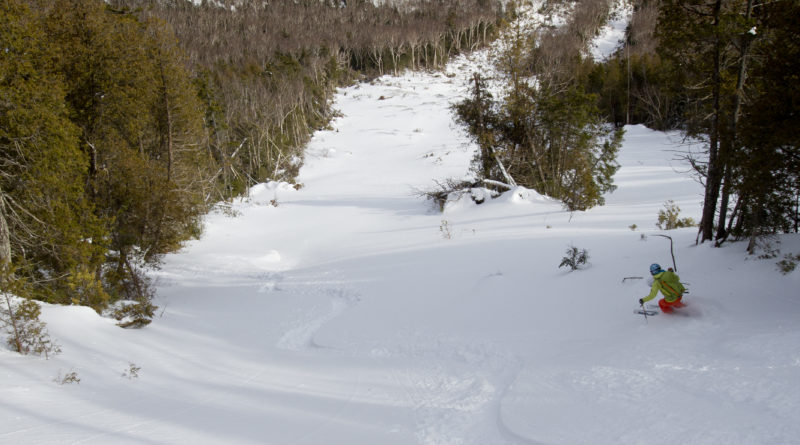New Avalanche Sites for the Northeast
When two Adirondack skiers, Nate Trachte and Caitlin Kelly, set up the website Adirondack Community Avalanche Project this winter (AdkAvy.org), they could not have known that their first incident report would be about the Angle Slides avalanche that buried two skiers on Saturday, February 12.
Since the website launched in January, more than 30 crowd-sourced observations have been logged on the site. Prior to Feb. 12, detailed observations noted “whumpfing,” “cracking,” signs of recent slides and, in some cases, show photos of slides in the Adirondacks. They detail the elevation, the location, the aspect and observations.
In the White Mountains, the Mount Washington Avalanche Center regularly posts conditions and incidents reports. To date, nothing like this has existed for the Adirondacks where slides are common.
“I think it’s a good start,” says Joshua Worth who has been teaching avalanche courses in the Adirondacks for 13 years and instructs the National Ski Patrol on avalanche safety. “But you need someone who has some professional avalanche expertise to sift through the data that’s being put out there and put into some sort of cohesiveness. You have no idea what experience level the people who are posting observations have,” he says.
While many avalanche centers do collect skier observations, ones like the Mt. Washington Avalanche Center or the Eastern Sierra Avalanche Center also have trusted observers and professional forecasters who sift through the reports. “Many people around here believe it’s something the Department of Environmental Conservation should take up,” says Worth. “But that’s a hard leap monetarily and also comes with lots of risks,” he says.
Recently, the National Weather Service launched an experimental avalanche site for Vermont and the Adirondacks. At present, it posts conditions, recent weather and snowpack history and alerts at weather.gov/btv/AvalancheWeather.
Still, as avy courses fill up and Worth sees the number of backcountry skiers in the ADK double, he believes AvyAdk.org is a good place to start. “We’re getting more tourists and with better gear, people are skiing steeper places than they used to,” he says. “Getting info from sites like AvyAdk.org is only going to help raise awareness of the conditions.”
Opening photo: Emily Johnson descending one of the Adirondack’s slides in the spring. by Brian Morh/EmberPhto

